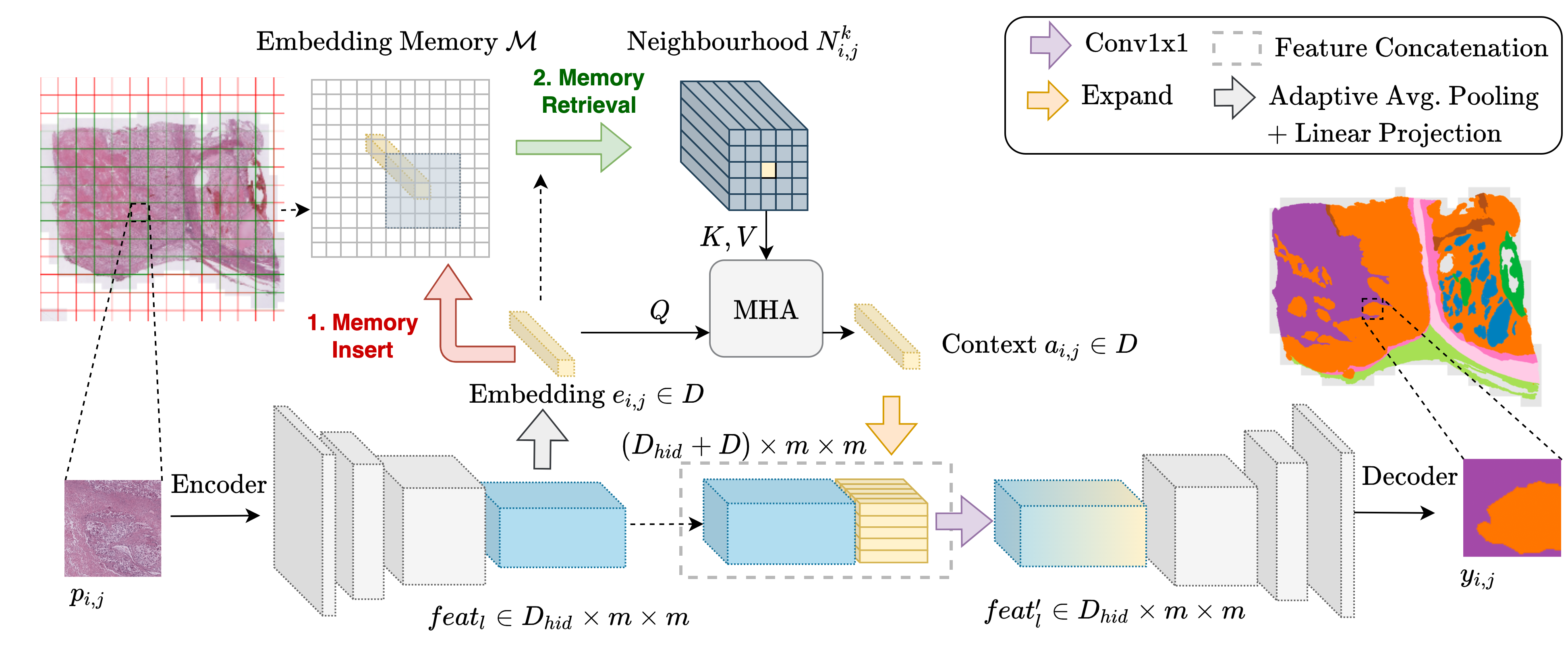Valuing Vicinity: Memory attention framework for context-based semantic segmentation in histopathology
The segmentation of histopathological whole slide images into tumourous and non-tumourous types of tissue is a challenging task that requires the consideration of both local and global spatial contexts to classify tumourous regions precisely. The identification of subtypes of tumour tissue complicates the issue as the sharpness of separation decreases and the pathologist's reasoning is even more guided by spatial context. However, the identification of detailed types of tissue is crucial for providing personalized cancer therapies. Due to the high resolution of whole slide images, existing semantic segmentation methods, restricted to isolated image sections, are incapable of processing context information beyond. To take a step towards better context comprehension, we propose a patch neighbour attention mechanism to query the neighbouring tissue context from a patch embedding memory bank and infuse context embeddings into bottleneck hidden feature maps. Our memory attention framework (MAF) mimics a pathologist's annotation procedure -- zooming out and considering surrounding tissue context. The framework can be integrated into any encoder-decoder segmentation method. We evaluate the MAF on a public breast cancer and an internal kidney cancer data set using famous segmentation models (U-Net, DeeplabV3) and demonstrate the superiority over other context-integrating algorithms -- achieving a substantial improvement of up to $17\%$ on Dice score. The code is publicly available at: https://github.com/tio-ikim/valuing-vicinity
PDF Abstract


